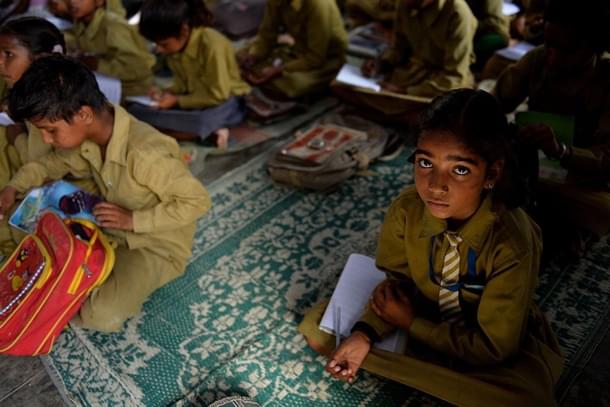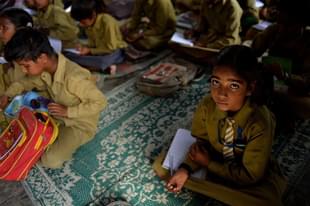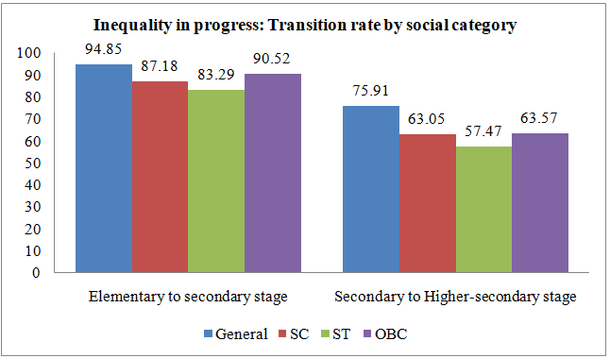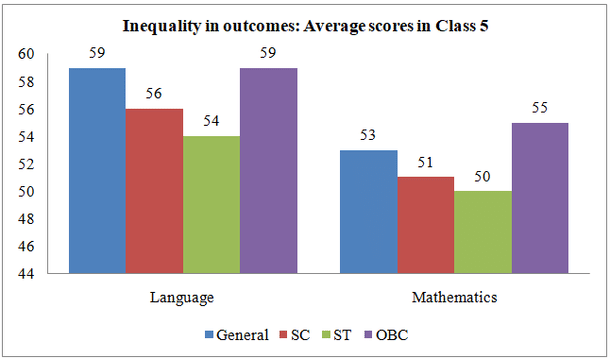Blogs
What The Data Says: Equalizing Learning Outcomes Among Social Categories Still A Challenge, But It Is Improving
Sarah Iype and Arushi Mathur
Nov 20, 2019, 05:30 PM | Updated 05:30 PM IST
Save & read from anywhere!
Bookmark stories for easy access on any device or the Swarajya app.


With roots dating back over two thousand years ago, the Indian caste system has engraved its place in history as one of the earliest embodiments of social stratification.
While the system originated as a fluid concept linked to occupational roles, the era of colonial rule has been faulted for embedding rigidity into the system, fuelling caste-based discrimination.
To reverse social injustices, independent India initiated a series of progressive affirmative policies such as the reservation system, aiming to realize the promise of equality enshrined in the Constitution.
Though the manifestation of caste-based discrimination in harsh forms such as untouchability etc., have been abolished, one cannot dismiss the subtle role caste continues to play in modern-day India.
A ubiquitous feature, caste affiliations are still prevalent in aspects of daily life such as food habits, surnames, and continue to play a significant role in forging marital associations.
Further, there is ample research that shows the linkage between socioeconomic status and educational attainment. Multiple factors interlinked with caste such as parental income and educational attainment, tend to be strongly correlated with student achievement.
Consequently, children from diverse backgrounds neither commence nor complete their education on level footing.
Establishing its belief in the role of education as a socio-economic equalizer, the government of India has invested intensively in efforts to universalize access to education through initiatives such as the mid-day meal scheme and free education through the Right to Education Act.
Today, enrolment rates across caste groups are equalized at the initial stages of education. The Gross Enrolment Ratio for Scheduled Castes and Scheduled Tribes exceeds 100, reflecting equity in access to primary education.
Despite these successes, it is not uncommon to hear stories about inequity in the Indian schooling system.
Aggregation across multiple reports suggests that discrimination and exclusionary practices tend to feature in access to mid-day meals, the usage of drinking water as well as classroom-seating arrangements.
Coupled with other socioeconomic factors, differential levels of transition and learning are visibly associated with caste-based stratification.
Lesser children from Scheduled Castes (SCs), Scheduled Tribes (STs) and Other Backward Classes (OBCs) transition to higher stages of education. While 75 per cent of General Category students continue their education from secondary to higher-secondary stages, only 57 per cent of Scheduled Tribes move on to higher studies.
This is further corroborated by data, which shows that dropout rates among SCs, STs and OBCs are at least 5 percentage points higher than the General Category at secondary level.
Examination results in Class 10 by social category also reveal systematically varied pass percentages. In the year 2015-16, the pass percentages for Class 10 among General Category students was 86 per cent, while the corresponding figure for SCs (75.40 per cent), STs (72.28 per cent) and OBCs (78.87 per cent) was under 80 per cent.
While India has largely been able to address the challenge of inequality at the entry levels of education, inequality in progress and outcomes still prevail.


Through its novel approach, NITI Aayog’s School Education Quality Index (SEQI) puts the spotlight on the critical parameters of education: learning, access, equity, infrastructure and governance processes, evaluating the status of schools across states and union territories (UTs) in India.
It is interesting to note that the variation in scores between states and UTs is the least in terms of equity-related metrics in the reference year.
While scores in the learning outcomes domain ranged from 2.1 per cent in Arunachal Pradesh to a 100 per cent in Chandigarh, almost all states and UTs score over 50 per cent in the equity domain, indicating relative uniformity across the nation.
In fact, 28 out of the total 35 states and UTs even record scores over 60 per cent. These scores further establish that there still exists significant room for improvement in terms of equitable education.
In a positive sign, through an assessment of equity in transition and learning levels by caste, gender and region, SEQI’s incremental analysis shows that a majority of the states and UTs have shown progress in ensuring parity in educational attainment in just one year.
Andhra Pradesh, Bihar, Dadra and Nagar Haveli, Delhi and Uttar Pradesh have improved their scores by over 15 percentage points due to greater uniformity in transition rates.
For instance, in Bihar, the difference in transition rates (from upper-primary to secondary levels) between OBCs and General Category students reduced by 13 percentage points from 14.6 per cent in the base year to 1.6 per cent in the reference year.
Crafted to propel the creation of a just and equitable society, the draft National Education Policy 2019 envisions the equalization of participation and learning outcomes among social categories by 2030.
Through the establishment of special education zones in disadvantaged pockets, sensitization of the administration and teachers, curricular reform to promote greater inclusivity, contextualized learning material, and targeted financial support, the policy lays the decadal road ahead for an inclusive India.
As the cradle of diversity, India is home to people from over 25,000 sub-castes. The education system thus has to cater to the needs of children from various backgrounds representing multiple languages, cultures, religions and traditions, as a syncretic whole.
One hundred and forty-four years since his birth, the words of the Iron Man of the nation, Sardar Vallabhai Patel, still remain relevant. The education system must 'remove distinctions of high and low, rich and poor, caste or creed’. This will be the truest celebration of national unity.




